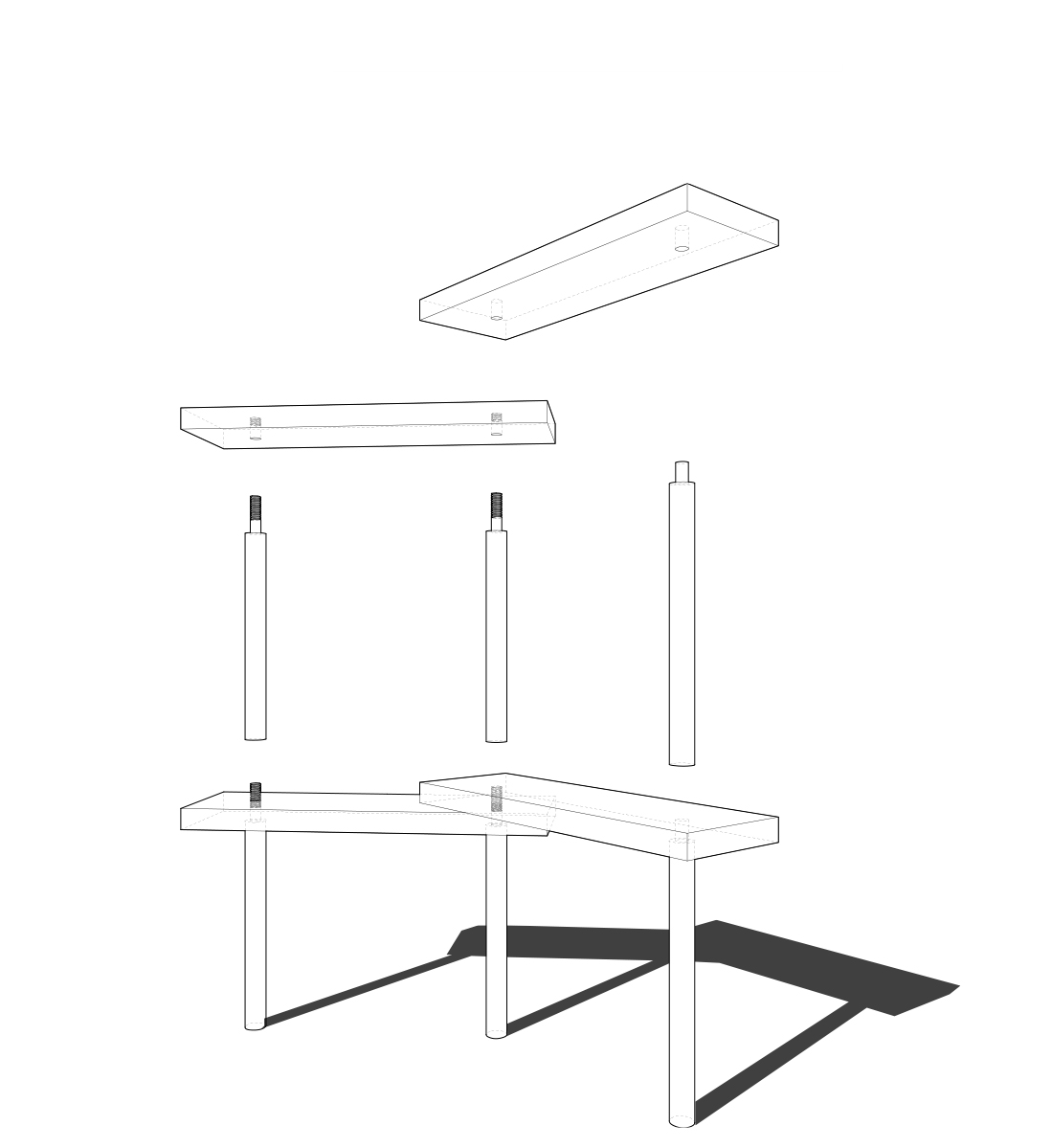BENCHES FOR NELSON MANDELA
An Investigation in Furniture through Modularity and Flexibility
Furniture Fabrication instructed by Heinz Kohler
University of Waterloo School of Architecture, 2014
in collaboration with Ying Qi Chen
Nelson Mandela is a figure in human history that will always be remembered as a fighter for peace. His twenty-seven year sacrifice to the people of South Africa, and even of the Globe, is seen as a determined struggle against evil. His success in breaking down the systematic racism and inequality of apartheid is an inspiring examples of determination and commitment to social progress.
When designing a chair for Mandela, the key concept addressed is the idea of transforming isolation to unity through the collective effort of individuals operating towards a common goal.
The apartheid system prevailed in South Africa and was systematically facilitated using devices like signs, fences, and walls, which were eventually rendered meaningless. The design of the chair expresses this social phenomenon by taking a stance as a fluctuating device that acts as a threshold between isolation and unity.
The people of the world embraced Mandela’s vision and were motivated to act as one force towards his vision. As an individual, one is powerless against discrimination and inequality, but united, under Mandela’s belief, there was power to act. This concept of participation is embraced by the chair, for it will require the users to interact with modules to achieve a stable and useful structure.
Nelson Mandela will forever be remembered as a guiding leader who led the path towards equality in an age of turmoil. Using modules as components of a whole, the chair is the threshold between isolation and unity.
When designing a chair for Mandela, the key concept addressed is the idea of transforming isolation to unity through the collective effort of individuals operating towards a common goal.
The apartheid system prevailed in South Africa and was systematically facilitated using devices like signs, fences, and walls, which were eventually rendered meaningless. The design of the chair expresses this social phenomenon by taking a stance as a fluctuating device that acts as a threshold between isolation and unity.
The people of the world embraced Mandela’s vision and were motivated to act as one force towards his vision. As an individual, one is powerless against discrimination and inequality, but united, under Mandela’s belief, there was power to act. This concept of participation is embraced by the chair, for it will require the users to interact with modules to achieve a stable and useful structure.
Nelson Mandela will forever be remembered as a guiding leader who led the path towards equality in an age of turmoil. Using modules as components of a whole, the chair is the threshold between isolation and unity.

fig. 01 Seated configuration matrix.

fig. 02 Compound drawing of parts.

fig. 03 Compound drawing of assembled unit.

fig. 04 Exploded perspective showing assembly process.

fig. 05 Detail photograph of routed hard maple screw.

fig. 06 Not-in-use state.

fig. 07 About-to-be-in-use state.

fig. 08 Participatory-state.

fig. 09 Configuration for multiple groups of people.

fig. 10 Configuration for one group of people.

fig. 11 Photograph of infinite configuration.
